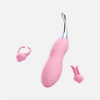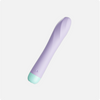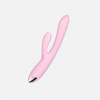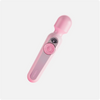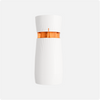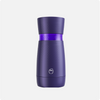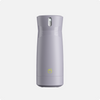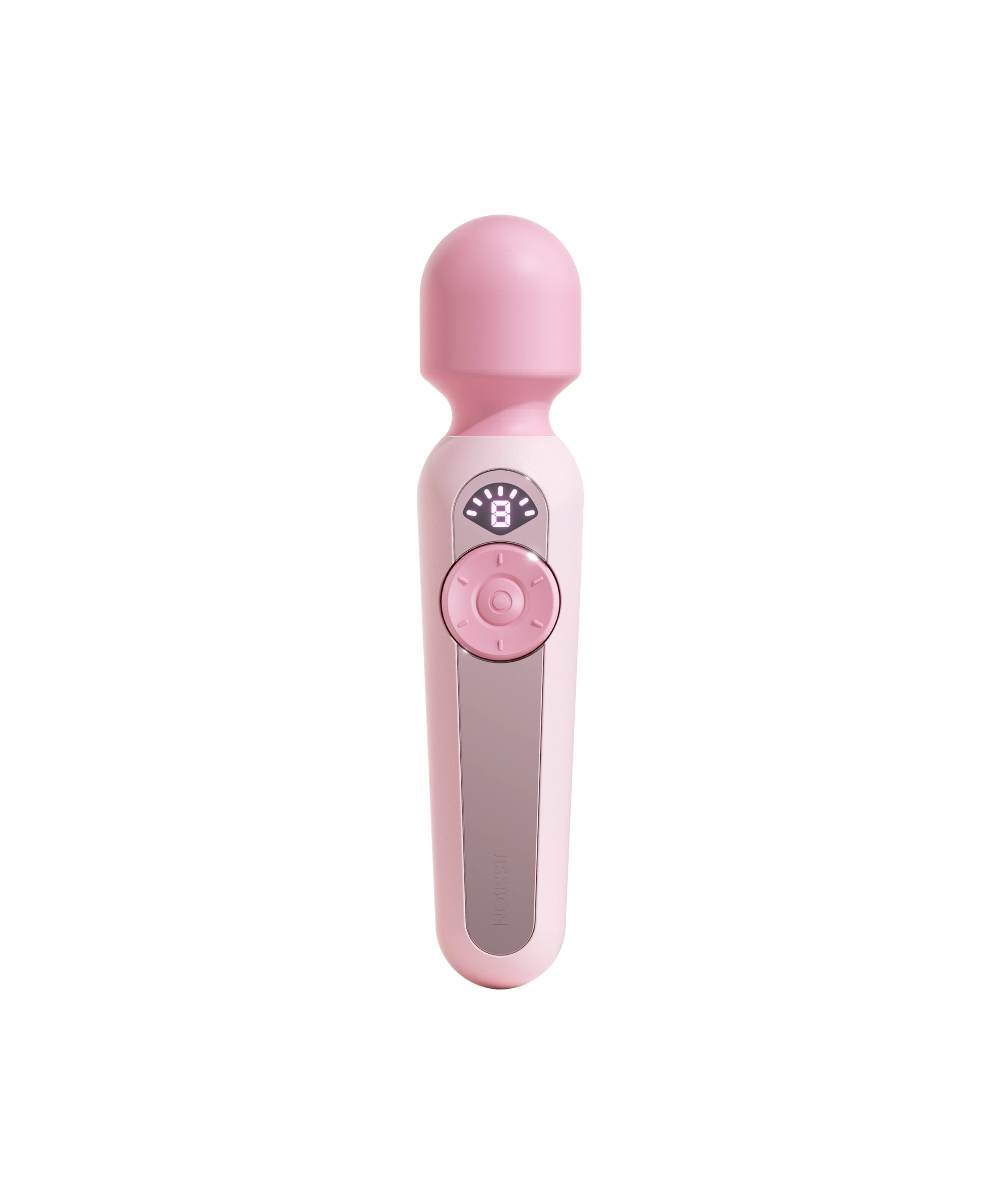Sexual culture continuously evolves as technology advances, generational values shift, and people become more comfortable discussing pleasure openly. The patterns emerging in 2025 reflect broader changes in how we approach connection, self-knowledge, and the intersection of digital life with physical experiences.
This guide explores the most significant developments shaping contemporary sexuality—from tech-integrated pleasure products to relationship structures to new attitudes about satisfaction. Whether you're curious about what's gaining attention or evaluating what might enhance your own experiences, understanding these patterns provides context for navigating modern intimate life.
AI-Enhanced Pleasure Devices
What's Happening
Connected toys with artificial intelligence capabilities are moving beyond simple remote control. These devices now:
- Learn individual preferences through usage patterns
- Adapt intensity automatically based on physiological responses
- Create personalized sequences that evolve over time
- Sync with biometric data (heart rate, body temperature)
- Generate custom content tailored to specific arousal profiles
Why It's Growing
Technology maturation: Machine learning algorithms have become sophisticated enough to detect subtle patterns in user behavior while remaining affordable for consumer products.
Pandemic acceleration: Extended periods of physical distancing normalized tech-mediated intimacy, removing previous stigma around high-tech pleasure devices.
Data privacy improvements: Companies now offer local processing (data stays on device) rather than cloud storage, addressing previous security concerns.
Real-World Applications
|
Feature |
How It Works |
User Benefit |
|
Adaptive intensity |
Sensors detect muscle tension, adjust power |
Prevents overstimulation or underwhelming sessions |
|
Pattern learning |
Algorithm identifies preferred rhythms |
Reduces need to manually adjust settings |
|
Voice control |
Hands-free operation via commands |
Maintains immersion during use |
|
Biometric sync |
Increases intensity as arousal builds |
Creates responsive, escalating experiences |
Products exemplifying this: App-connected wand vibrators with learning modes, smart stroker devices with pressure sensors, and remote controlled vibrators featuring adaptive algorithms.
Considerations
- Privacy remains crucial – verify how data is stored and used
- Manual override essential – AI suggestions shouldn't replace personal control
- Learning curves exist – devices improve after multiple uses, not immediately
Dopamine Dating: Intentional Anticipation

The Concept
Dopamine dating deliberately slows relationship progression to maximize anticipation and neurochemical reward. Rather than rushing physical intimacy, participants:
- Space out contact to maintain novelty
- Create deliberate anticipation before meetings
- Delay specific milestones intentionally
- Focus on building tension rather than immediate gratification
Psychological Basis
Research on reward systems shows dopamine release peaks during anticipation, not just achievement. By extending the anticipation phase, people experience prolonged elevated arousal states.
The science: Unpredictable rewards trigger stronger dopamine responses than guaranteed outcomes. Applying this to dating creates heightened excitement.
How People Practice It
Common approaches:
- Scheduled messaging gaps – Responding after deliberate intervals rather than immediately
- Delayed physical contact – Waiting multiple dates before kissing or intimate touch
- Teasing communication – Hinting at future activities without full disclosure
- Strategic mystery – Revealing personal information gradually
Sample timeline:
- Dates 1-3: Conversation only, building intellectual connection
- Dates 4-6: Hand-holding, light physical affection
- Dates 7-10: Kissing, extended physical contact
- Date 10+: Discussing progression to sexual intimacy
Criticism and Balance
Concerns raised:
- Can feel manipulative if not mutually agreed upon
- May frustrate partners with higher spontaneity preferences
- Risks overthinking natural connection development
- Could mask incompatibility by sustaining artificial excitement
Healthy implementation requires:
- Transparent communication about approach
- Flexibility when natural chemistry suggests different pacing
- Regular check-ins about satisfaction with progression speed
- Willingness to adjust if formula feels forced
Erotic Intelligence Focus
Defining Erotic Intelligence
This concept, popularized by therapist Esther Perel, emphasizes curiosity, imagination, and playfulness as central to sustained desire. In 2025, more people actively cultivate these qualities rather than treating them as innate.
Core Components
Curiosity about self:
- What conditions help you feel most aroused?
- How does your desire fluctuate with stress, cycle, season?
- What fantasies intrigue you even if you wouldn't act on them?
Curiosity about partner:
- What experiences heightened their pleasure recently?
- How has their relationship with their body changed?
- What unexplored territory interests them?
Imaginative capacity:
- Creating mental scenarios beyond routine
- Introducing novelty through setting, roleplay, or story
- Viewing familiar partner through fresh perspective
Playful experimentation:
- Trying activities without attachment to outcome
- Laughing through awkward moments
- Treating exploration as discovery rather than performance
Practical Applications
Exercises gaining popularity:
- Desire mapping – Tracking arousal patterns across weeks or months
- Fantasy sharing – Discussing scenarios without obligation to enact
- Sensory exploration – Focusing on one sense (touch, sound) per session
- Perspective shifts – Imagining partner as stranger or new acquaintance
Resources people use:
- Guided audio experiences focusing on imagination
- Workbooks for couples exploring erotic intelligence
- Workshops teaching curiosity-building skills
- Therapy specifically addressing desire cultivation
Digital Detox Intimacy

The Movement
Growing awareness of technology's impact on presence has created demand for deliberately tech-free intimate experiences. This involves:
- Designated phone-free periods before/during intimacy
- Bedrooms as device-free zones
- Analog communication methods (handwritten notes, verbal check-ins)
- Focus on physical sensation over digital stimulation
Why It's Gaining Traction
Research findings:
- Screen time before bed disrupts sleep quality and hormone regulation
- Partial attention during intimacy reduces satisfaction for both partners
- Constant connectivity increases cortisol, which suppresses arousal
- Digital comparison (via social media) negatively impacts body image and desire
Implementation Strategies
|
Approach |
Description |
Difficulty Level |
|
Device basket |
All phones go in designated spot 30 minutes before bed |
Easy |
|
Airplane mode dates |
Devices off completely during designated quality time |
Medium |
|
Tech-free bedroom rule |
No devices enter sleeping space ever |
Challenging |
|
Analog intimacy planning |
Discuss desires face-to-face, not via text |
Medium |
Balancing Technology
Not about complete rejection:
- Long-distance couples still benefit from video intimacy
- Educational content (articles, videos) aids learning
- Some tech (vibrators, mood lighting) enhances experience
The distinction: Intentional technology use vs. habitual scrolling or distracted engagement.
Pleasure Mapping and Body Literacy
What This Involves
Systematic exploration and documentation of personal pleasure responses, moving beyond genital-focused approaches to full-body awareness.
Techniques People Use
Solo exploration:
- Touch inventory – Systematically touching every body area, noting responses
- Pressure variation – Testing light, medium, firm touch on same locations
- Temperature play – Using warm/cool objects to discover preferences
- Texture exploration – Silk, leather, rubber, metal against skin
- Documentation – Journaling or creating visual maps of discoveries
Partnered mapping:
- Taking turns as explorer and guide
- Verbal feedback during exploration ("more pressure," "slightly left")
- Non-genital sessions (entire session focused on arms, back, legs, etc.)
- Revisiting same areas weeks later to notice changes
Tools Supporting This Trend
- Sensation wheels with different textures
- Temperature-play items (glass, metal toys)
- Feather ticklers, massage tools
- Body-safe paints for tracing sensitive areas
- Guided audio walking through systematic exploration
Products facilitating discovery: Bullet vibrators for pinpoint stimulation testing, massage wands for broader pressure exploration, and varied-texture accessories.
Ethical Non-Monogamy Normalization
Current Landscape
Consensual non-monogamy (CNM) has moved from fringe to discussed-openly territory, with younger generations particularly embracing various relationship structures.
Forms Gaining Visibility
|
Structure |
Definition |
Key Characteristics |
|
Polyamory |
Multiple romantic relationships with all parties' knowledge |
Emphasis on emotional connection |
|
Open relationships |
Committed couple allowing sexual experiences with others |
Primary partnership remains central |
|
Relationship anarchy |
No hierarchy between connections |
All relationships equally valid |
|
Solo polyamory |
Multiple connections without nesting/enmeshment |
Maintaining independence |
|
Swinging |
Couples engaging with other couples sexually |
Typically recreational, less romantic focus |
Why Interest Is Growing
Cultural factors:
- Reduced religious influence on relationship norms
- Longer lifespans making "one person forever" feel limiting
- Greater acceptance of diverse relationship models
- Social media connecting like-minded communities
Individual motivations:
- Desire for variety without dishonesty
- Recognition that one person can't meet all needs
- Exploration of different aspects of identity
- Challenging traditional relationship scripts
Requirements for Success
Research on CNM relationships identifies critical factors:
- Exceptional communication skills – Clear, frequent, honest dialogue
- Emotional regulation capacity – Managing jealousy constructively
- Strong boundaries – Knowing and articulating limits
- Compersion development – Finding joy in partners' other connections
- Time management – Balancing multiple relationships ethically
Not easier than monogamy – requires significant emotional labor and self-awareness.
JOI and Guided Experience Content

Understanding JOI
"Jerk Off Instruction" has evolved from niche adult content category to broader guided pleasure experiences across genders and preferences.
Modern Variations
Audio-focused experiences:
- Voice actors providing detailed guidance
- Emphasizing imagination over visual stimulation
- Often featuring storylines or character scenarios
- Ranging from gentle to dominant tones
Interactive video formats:
- Choose-your-own-path style content
- Real-time responsiveness via connected toys
- Customization based on stated preferences
- Integration with VR for immersive experiences
Text-based guidance:
- Detailed written instructions for pacing
- Fantasy scenarios with embedded direction
- Often paired with imagery or ambient sound
- Appeals to people who prefer reading
Appeal Factors
Why consumption is increasing:
- Provides structure for people who feel uncertain during solo play
- Removes decision fatigue by having someone else direct
- Enhances imagination through narrative elements
- Creates connection feeling despite solo activity
- Accommodates fantasies without real-world logistics
Ethical Considerations
Content creation concerns:
- Fair compensation for creators
- Consent verification for all participants
- Age verification systems
- Platform policies preventing exploitation
Consumption considerations:
- Supporting ethical producers
- Balancing guided vs. self-directed experiences
- Ensuring content doesn't replace partner intimacy when applicable
Competitive Wellness and Sexual Fitness

The Phenomenon
Gamification and competition have entered sexual wellness, with people tracking metrics, setting goals, and sharing achievements.
What's Being Tracked
Individual metrics:
- Orgasm frequency and intensity ratings
- Session duration and variety
- Pelvic floor strength via smart kegel trainers
- Arousal patterns across menstrual cycle
- Toy usage and preferred settings
Relationship metrics:
- Intimacy frequency compared to baseline
- New activities tried per month
- Communication quality scores
- Mutual satisfaction ratings
Platforms and Tools
Apps offering tracking:
- Sexual wellness journals with analytics
- Pelvic floor training programs with progress charts
- Relationship apps with intimacy reminders
- Connected toys logging usage patterns
Gamification elements:
- Achievement badges for milestones
- Streak tracking for consistent engagement
- Community challenges (e.g., "30-day exploration")
- Reward systems for reaching goals
The Debate
Supporters argue:
- Data provides valuable self-knowledge
- Tracking combats complacency in long-term relationships
- Metrics help identify patterns (stress impact, cycle effects)
- Community aspect reduces isolation
Critics contend:
- Quantification removes spontaneity and joy
- Creates performance pressure
- Comparison with others breeds inadequacy
- Reduces intimate experiences to numbers
- Misses qualitative, emotional aspects
Balanced approach: Use tracking as tool for curiosity, not judgment. Metrics should inform, not define, satisfaction.
Generational Differences in Approach
Gen Z Characteristics (Born 1997-2012)
Distinctive patterns:
- Greater comfort with fluidity – gender, orientation, relationship structures
- Technology-native intimacy – seamless integration of digital tools
- Mental health prioritization – addressing anxiety, body image proactively
- Consent culture emphasis – explicit communication normalized
- Decreased alcohol use – preferring sober intimate experiences
Sex toy preferences:
- App-connected devices for long-distance relationships
- Gender-neutral designs
- Aesthetically minimalist products
- Sustainable/eco-friendly materials
Millennial Patterns (Born 1981-1996)
Characteristics:
- Therapy normalization – seeking professional support for sexual concerns
- Later sexual debut compared to previous generations
- Higher pornography consumption with increasing ethical considerations
- Work-life balance struggles impacting intimate time
- Openness to non-monogamy within committed frameworks
Product preferences:
- Premium quality over budget options
- Established brands with research backing
- Wellness integration (CBD, mindfulness)
- Discretion in design and packaging
Cross-Generational Commonalities
Despite differences, certain patterns span ages:
- Increasing demand for education and accurate information
- Rejection of shame-based messaging
- Emphasis on pleasure equality for all genders
- Interest in extending sexual prime across lifespan
- Appreciation for diverse body types and abilities
Emerging Patterns to Watch
Micro-Trends Gaining Momentum
Scent-based arousal exploration:
- Custom pheromone blends
- Partner scent collection and use during separation
- Aromatherapy integration with intimate moments
Temperature play normalization:
- Warming and cooling lubricants
- Temperature-responsive toys
- Ice and heat as standard foreplay elements
Sound-focused experiences:
- Erotic ASMR content
- Binaural beats for arousal enhancement
- Custom playlists designed for specific phases
Mindfulness integration:
- Meditation before intimacy
- Breathwork during arousal
- Present-moment awareness exercises
- Tantric technique mainstream adoption
Navigating Trends Thoughtfully
Questions to Ask Before Adopting
For any new practice:
- Does this align with my actual desires or am I responding to trend pressure?
- Will this enhance connection or create distance/performance anxiety?
- Do I have necessary knowledge to try this safely?
- Have I discussed this with relevant partners?
- What's my exit strategy if this doesn't work for me?
Avoiding Trend Fatigue
Healthy engagement:
- Sample selectively – not every trend suits every person
- Prioritize fundamentals – communication, consent, pleasure remain central
- Allow experimentation – trying and discarding practices is valid
- Trust your instincts – if something feels off, don't force it
- Remember individuality – your unique preferences matter more than trends
Frequently Asked Questions
Are these trends just marketing hype from sex toy companies?
Some trends emerge organically from cultural shifts, while others receive amplification from commercial interests. The key is distinguishing between genuine movement toward healthier, more informed sexuality versus pressure to constantly consume new products. Many patterns (dopamine dating, erotic intelligence) require no purchases, while others (AI devices) do involve products. Evaluate based on whether the concept itself resonates, not just marketing appeal.
Do I need to follow these trends to have a satisfying sex life?
Absolutely not. Sexual satisfaction comes from self-knowledge, communication, consent, and connection—all timeless elements. Trends offer options for exploration, not requirements. Many people maintain deeply fulfilling intimate lives without engaging any contemporary patterns. Use trends as inspiration if they genuinely interest you, ignore them if they don't.
How do I bring up trying something new with a long-term partner?
Frame it as shared exploration rather than criticism of current intimacy. Try: "I read about [concept] and found it interesting. Would you be curious to learn more together?" Emphasize that you're suggesting an option, not demanding change. Respect if they're not interested and appreciate if they're willing to explore.
Are younger generations actually having more adventurous sex lives?
Data is mixed. Younger people often have more liberal attitudes and greater access to information, but many report having less frequent sex than previous generations at the same ages. They may be more experimental within sexual encounters while having fewer partners overall. The relationship between attitudes and behavior is complex and individually variable.
How do I know if a trend is actually safe?
Research from credible sources (medical organizations, sexual health nonprofits, peer-reviewed studies). For physical products, verify body-safe materials, read user reviews, and start conservatively. For practices, understand anatomy and physiology involved. When in doubt, consult healthcare providers or certified sex educators—most welcome these questions.
Will focusing on trends make intimacy feel less authentic?
It can if pursued mechanically or from obligation. Approach with curiosity and playfulness rather than checklist mentality. Authentic intimacy comes from genuine desire and presence, not completing a trend roster. Use patterns that genuinely intrigue you; discard those that feel forced or performative.
Moving Forward: Your Unique Path
Sexual culture constantly evolves, and staying informed helps you make conscious choices rather than following scripts unconsciously. These patterns offer insights into contemporary approaches, but your satisfaction depends on discovering what resonates with your authentic desires, values, and circumstances.
The healthiest relationship with sexual trends treats them as options in an expanding menu, not obligations or measures of adequacy. Your intimate life is yours to craft based on what brings genuine pleasure, connection, and fulfillment.
Ready to explore products supporting your curiosity? Discover Jissbon's collection of thoughtfully designed, body-safe options created for diverse preferences and exploration styles.


